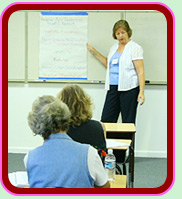









Perceptual-Motor Development is the specific process by which a person develops the system of nerve pathways that takes in information through the senses, organizes and interprets it, and then responds. All information coming into a person’s awareness is taken in through an elaborate system of nerve pathways leading to the brain, which then processes it. This system develops throughout a child’s growing years. Through touch and movement (the “motor” part of perceptual-motor), the infant and growing child adds meaning (the “perceptual” part) to the senses of seeing and hearing. As these develop together, they form the complete network of information-processing pathways, which can be likened to a system of freeways with connecting bridges.
Sometimes bridges are out. If, for some reason, a child misses a step in his perceptual-motor development, the pathways will develop incorrectly. The pathways can then be likened to a completed system of freeways with a bridge or two missing. Information will be processed poorly at the “missing  bridge” and the child will be unable to make accurate and appropriate responses.
bridge” and the child will be unable to make accurate and appropriate responses.
Perceptual-motor training is an effective way to build the bridges that were not built during a child’s perceptual-motor development. This training enables him to better cope with information from a printed page as well as with the dynamics of a classroom.
Perceptual-motor training can re-build bridges and help the child to make accurate and appropriate responses.
The training involves teaching specific motor skills and developing appropriate motor responses. It is the child’s ability to generalize these motor responses, which allows him/her to make accurate and appropriate responses to incoming information.